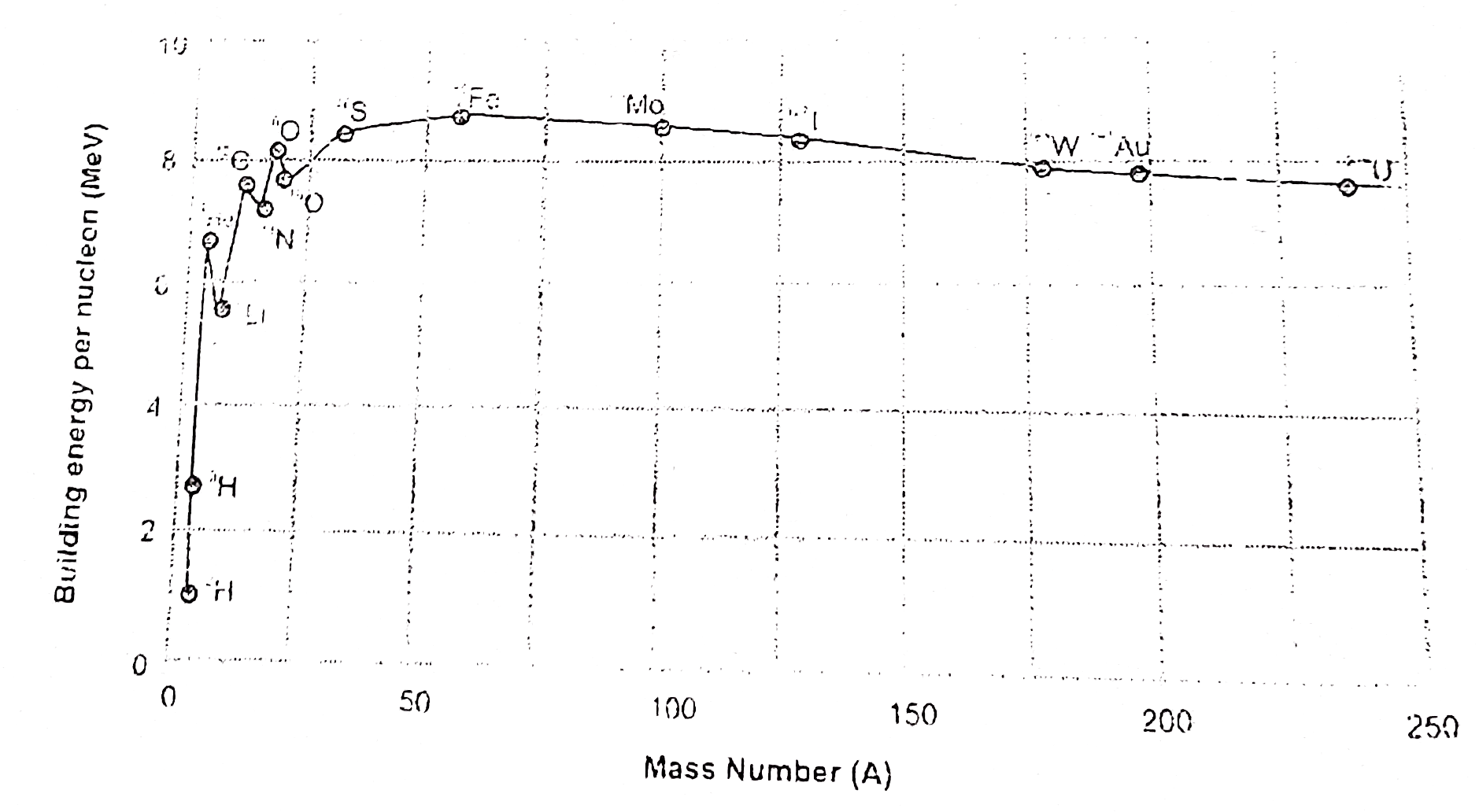Assertion:Nuclear binding energy per nucleon is in the order -94Be>73Li>42He.
Reason:Binding energy per nucleon increases linearly with difference in number of neutrons and protons.
If both assertion and reason are true and reason is the explaination of assertion.
If both assertion and reason are true but reason is not the correct explaination of assertion
If assertion is true but reason is false
If both assertion and reason are false.
The correct Answer is:D
To solve the question, we need to analyze both the assertion and the reason provided.
Step 1: Understand the Assertion
The assertion states that the nuclear binding energy per nucleon is in the order:
94Be>73Li>42He
Step 2: Analyze the Binding Energy
Nuclear binding energy is the energy released when nucleons (protons and neutrons) bind together to form a nucleus. Generally, for light nuclei, the binding energy per nucleon tends to be higher, while for heavier nuclei, it tends to decrease due to increased repulsion among protons.
Step 3: Compare the Elements
- Helium (He): Atomic mass = 4, has a relatively high binding energy per nucleon.
- Lithium (Li): Atomic mass = 7, has a lower binding energy per nucleon than Helium.
- Beryllium (Be): Atomic mass = 9, has an even lower binding energy per nucleon than Lithium.
From this, we can conclude that the correct order of binding energy per nucleon should actually be:
42He>73Li>94Be
Thus, the assertion is false.
Step 4: Understand the Reason
The reason states that the binding energy per nucleon increases linearly with the difference in the number of neutrons and protons. This statement is also misleading because the binding energy does not necessarily increase linearly with the difference in neutrons and protons. In fact, the relationship is more complex and does not follow a simple linear trend.
Step 5: Conclusion
Both the assertion and the reason are false. Therefore, the correct answer is that both the assertion and reason are false.
Final Answer
Both the assertion and the reason are false.
---
The assertion states that the nuclear binding energy per nucleon is in the order:
94Be>73Li>42He
Nuclear binding energy is the energy released when nucleons (protons and neutrons) bind together to form a nucleus. Generally, for light nuclei, the binding energy per nucleon tends to be higher, while for heavier nuclei, it tends to decrease due to increased repulsion among protons.
- Helium (He): Atomic mass = 4, has a relatively high binding energy per nucleon.
- Lithium (Li): Atomic mass = 7, has a lower binding energy per nucleon than Helium.
- Beryllium (Be): Atomic mass = 9, has an even lower binding energy per nucleon than Lithium.
42He>73Li>94Be
The reason states that the binding energy per nucleon increases linearly with the difference in the number of neutrons and protons. This statement is also misleading because the binding energy does not necessarily increase linearly with the difference in neutrons and protons. In fact, the relationship is more complex and does not follow a simple linear trend.
Both the assertion and the reason are false. Therefore, the correct answer is that both the assertion and reason are false.
Both the assertion and the reason are false.
Similar Questions
The value of binding energy per nucleon is
View SolutionThe binding energy per nucleon is maximum in the case of.
View SolutionThe binding energy per nucleon is maximum in the case of.
View SolutionAverage binding energy per nucleon over a wide range is
View SolutionAssertion : Binding energy per nucleon is of the order of MeV.
Reason: 1MeV=1.6×10−13J.View SolutionAs the mass number A increases, the binding energy per nucleon in a nucleus.
View SolutionFind the binding energy of the nucleus of lighium isotope .3Li7 and hence find the binding energy per nucleon in it.
View SolutionWhen the number of nucleons in a nuclues increases the binding energy per nucleon
View SolutionDraw the graph showing thervariation of binding energy per nucleon with mass number. Give therason for the decrease of binding energy per nucleon for nuclei with high mass numbers.

The binding energy per nucleon for nuclei with high mass number is low due to the large coulomb repulsion between the protons inside these nuclei.View SolutionAssertion : Binding energy per unit nucleon increase in atomic mass number .
Reason : Density of nucleus increases with increase in mass number.View Solution
